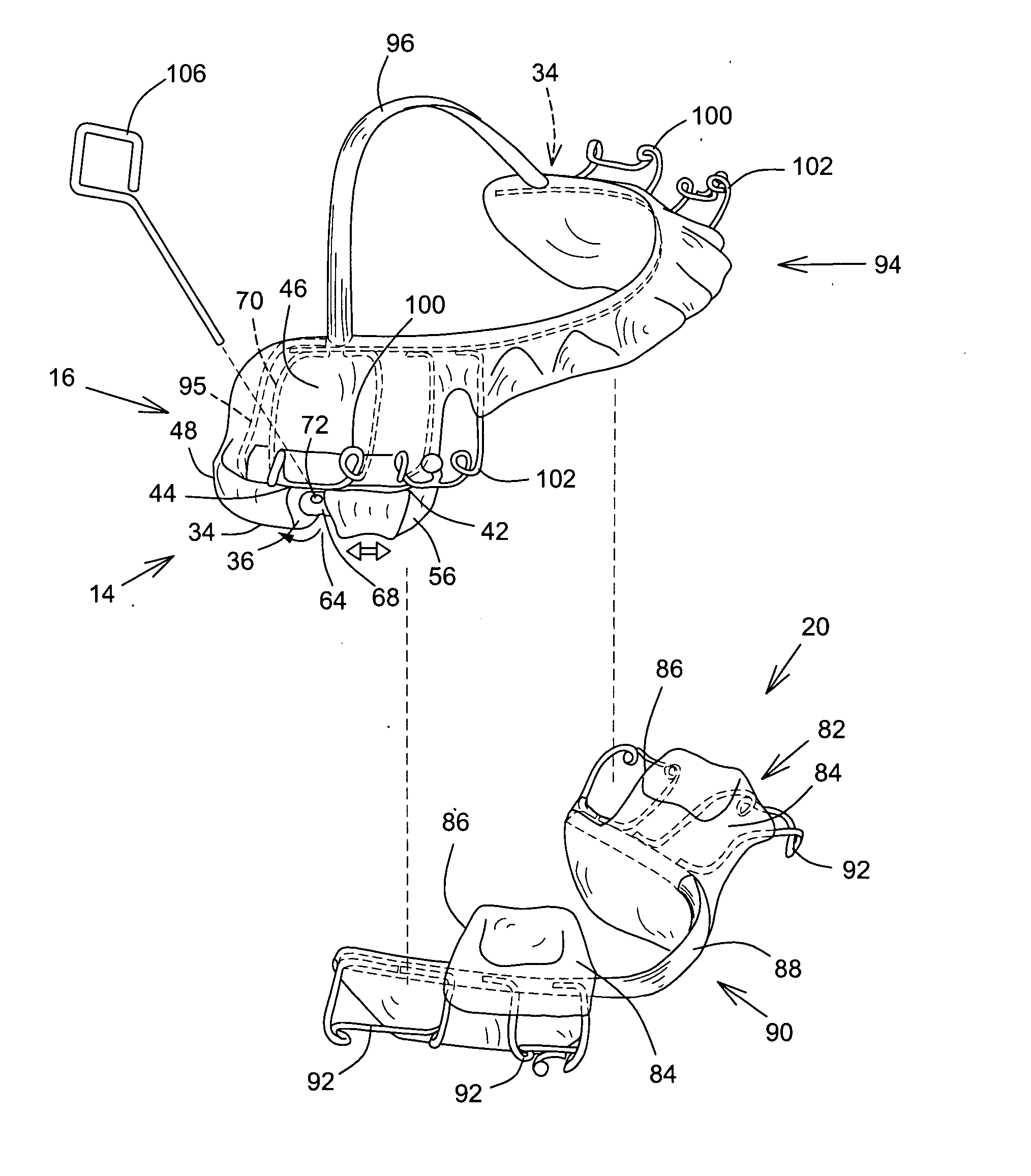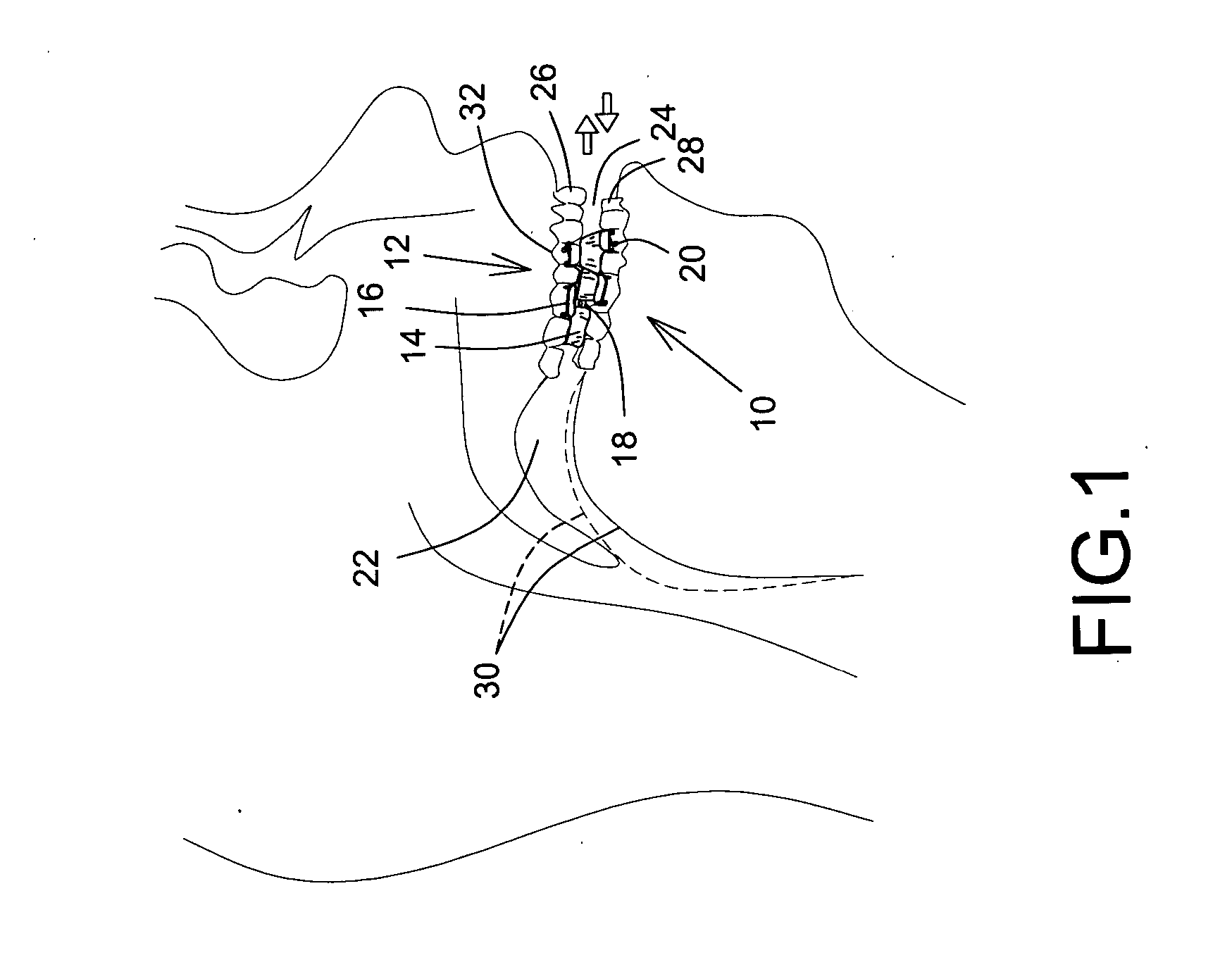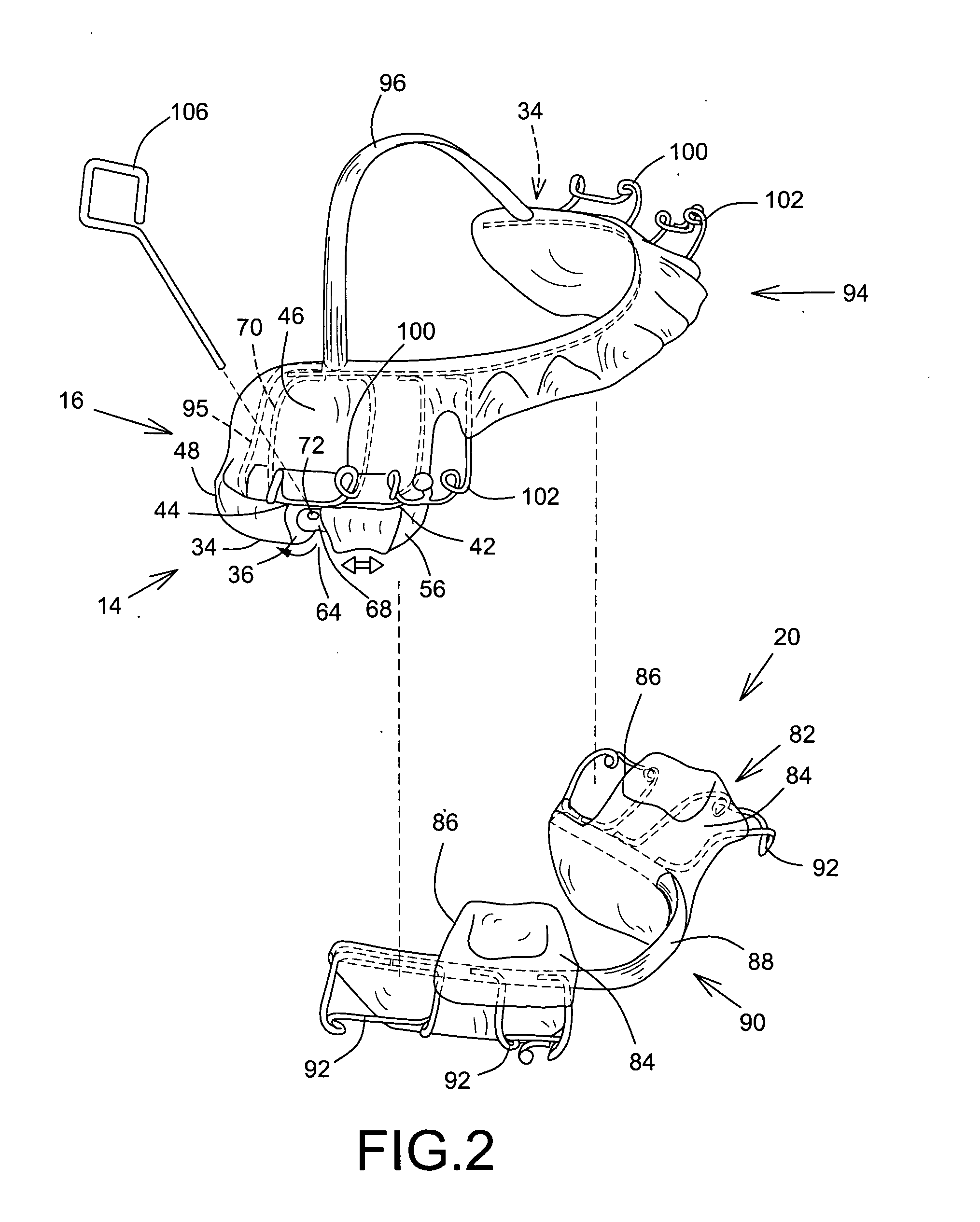Anti-snoring apparatus
a technology of anti-snoring and anti-snoring equipment, which is applied in the field of anti-snoring equipment, can solve the problems of complex and costly designs, affecting the effectiveness of anti-snoring devices, and requiring several visits to the dentist, so as to achieve the effect of reducing the disadvantages of discomfort and complex operation procedures, facilitating operation, and being inexpensive to manufactur
- Summary
- Abstract
- Description
- Claims
- Application Information
AI Technical Summary
Benefits of technology
Problems solved by technology
Method used
Image
Examples
Embodiment Construction
[0031] Referring now to FIG. 1, an embodiment of an adjuster device is shown generally at 10 as part of an anti-snoring apparatus 12. Broadly speaking, the adjuster device 10 includes a first stop portion 14, a first, maxillary bite body 16, and an actuator 18. In this embodiment, a second mandibular bite body 20 is included and is complementary to the first maxillary bite body 16, and when fitted in the mouth of a patient define an air passageway 22 that extends from a gap 24 from between the front upper and lower incisors 26, 28 to the posterior of the tongue 30.
[0032] Referring now to FIGS. 2 and 3, the first stop portion 14 is connected to the rear of the first bite body 16 and is located to engage two or four upper rear molars 32. The first stop portion 14 includes a pair of first blocking members 34. Since both blocking members 34 are essentially identical, only one will now be described in detail. The blocking member 34 includes a first blocking surface 36, which is disposed...
PUM
 Login to View More
Login to View More Abstract
Description
Claims
Application Information
 Login to View More
Login to View More - R&D
- Intellectual Property
- Life Sciences
- Materials
- Tech Scout
- Unparalleled Data Quality
- Higher Quality Content
- 60% Fewer Hallucinations
Browse by: Latest US Patents, China's latest patents, Technical Efficacy Thesaurus, Application Domain, Technology Topic, Popular Technical Reports.
© 2025 PatSnap. All rights reserved.Legal|Privacy policy|Modern Slavery Act Transparency Statement|Sitemap|About US| Contact US: help@patsnap.com



